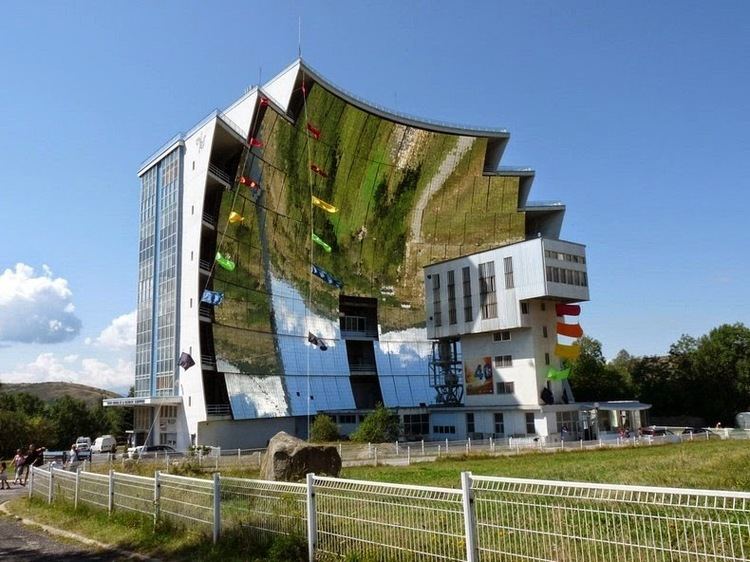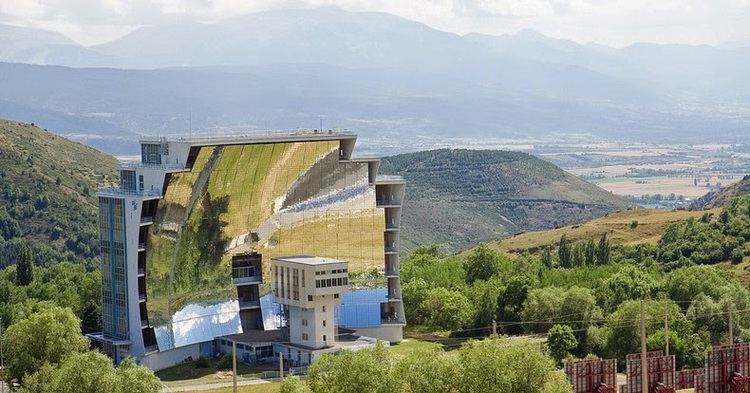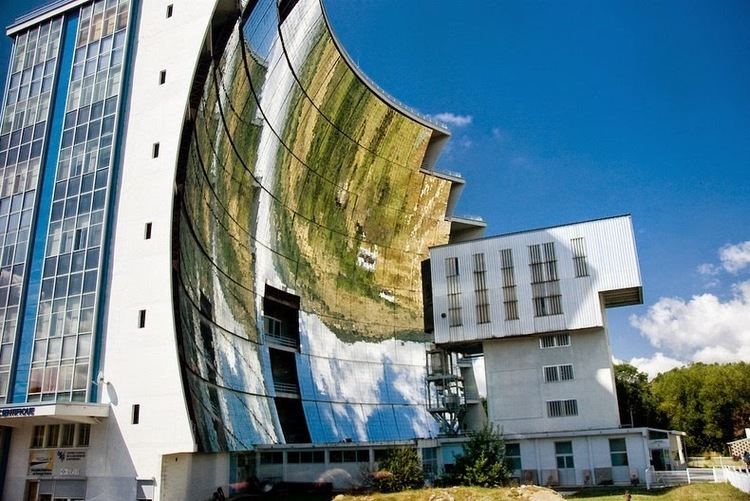Height 54 metres (177 ft) Beginning date 1962 | Width 48 metres (157 ft) Opening date 1970 Completion date 1968 | |
 | ||
Euro energy tour 2 odeillo solar furnace france
The Odeillo solar furnace is the world's largest solar furnace. It is situated in Font-Romeu-Odeillo-Via, in the department of Pyrénées-Orientales, in south of France. It is 54 metres (177 ft) high and 48 metres (157 ft) wide, and includes 63 heliostats. It was built between 1962 and 1968, and started operating in 1970, and has a power of one megawatt.
Contents
- Euro energy tour 2 odeillo solar furnace france
- Geography
- Working principle
- Advantages
- Uses
- History
- Public information center Hliodysse
- Bibliography
- External links
- References

It serves as a science research site studying materials at very high temperatures.
Geography

It is situated in Font-Romeu-Odeillo-Via, in the department of Pyrénées-Orientales, region of Languedoc-Roussillon, in south of France. The site was chosen because:

The solar power plant of Themis and the Mont-Louis Solar Furnace are situated nearby.
Working principle

The principle used is the concentration of rays by reflecting mirrors (9,600 of them). The solar rays are picked up by a first set of steerable mirrors located on the slope, and then sent to a second series of mirrors (the « concentrators »), placed in a parabola. Hence they converge towards a circular target on top of a central tower; this target was only 40 cm in diameter. That is equivalent to concentrate the energy of "10,000 suns."
Advantages

Uses

The research areas are also extended to the aviation and aerospace industries. Experiments can be there in conditions of high chemical purity. The high temperature materials division use the furnace to evaluate radome survival during MIRV warhead earth re-entry along with investigating other material properties under the "high energy thermal radiation environment" frequently produced by "nuclear devices".
History
French chemist Felix Trombe and his team have achieved in Meudon in 1946 first experience using a DCA mirror to show the ability to reach high temperatures very quickly and in a very pure environment with light the highly concentrated sunlight. The aim was to melt the ore and extract highly pure materials for making new and improved refractories.
To achieve this objective and test the various possibilities, a first solar furnace was built at Mont-Louis in 1949. Some years later, on the model of Mont-Louis furnace and to the results obtained, a solar furnace of size almost industrial Odeillo was built. Work on the construction of the Great Solar Oven of Odeillo lasted from 1962 to 1968 for a commissioning in 1970.
Strong supporters of solar power and following the first oil shock of 1973, during the second half of the 1970s, researchers at the Odeillo solar furnace leaded further their work towards the conversion of solar energy into electricity.
Public information center Héliodyssée
Since 1990, an information center open to the public is also present on the site, independently of the CNRS laboratory.
Designed for young and old, Héliodyssée allows to discover with fun solar energy and its derivatives (other forms of renewable energy, uses in the home) and the work of researchers from CNRS on energy, environmental, materials for space, materials of the future.
